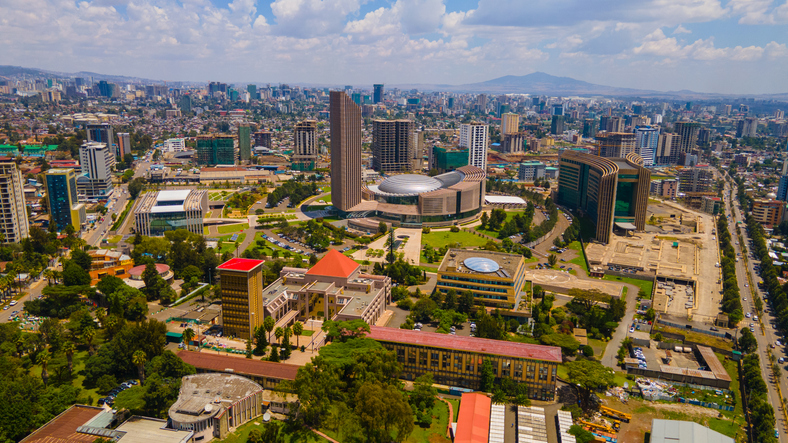Disinformation in Post-Conflict Societies: The Case of Ethiopia and the Tigray War (2020-22)
8 January 2025
Hope Johnson, PhD researcher at the Security, Crime and Intelligence Innovation Institute, explores the impact of disinformation on the recovery of Ethiopian society from war.
Disinformation, the deliberate spread of false or misleading information, is a potent force in any society, but its effects are particularly harmful in post-conflict contexts. In societies emerging from violence, disinformation can undermine peace efforts, disrupt reconciliation, and fuel ongoing tensions.
It often serves to entrench divisions between groups, distorting narratives around victimhood and accountability, making it difficult to establish a unified national story or seek justice for atrocities. The widespread use of social media and the digital sphere has amplified the reach and speed at which disinformation spreads, making it a pressing challenge for post-conflict societies today.
The Tigray War and Disinformation in Ethiopia
Ethiopia’s recent Tigray conflict (2020–2022) and the country’s ongoing post-conflict phase present a clear example of how disinformation can disrupt efforts to rebuild after war. The war between the Ethiopian federal government and the Tigray People’s Liberation Front (TPLF) resulted in thousands of deaths, displacement of millions, and severe human rights abuses. As the country works toward peace, disinformation continues to shape public perceptions of the conflict.
Competing narratives spread through social media, traditional news outlets, and state propaganda have deepened divides, making transitional justice—a key mechanism for addressing past atrocities—more difficult to pursue.
Disinformation and Transitional Justice in Ethiopia
In Ethiopia, both the government and international actors are striving to pursue transitional justice after the Tigray War. However, disinformation has complicated these efforts. Disinformation campaigns have led to competing narratives about which ethnic groups bear responsibility for the atrocities committed during the war. Ethnic Tigrayans, Amharas, and Oromos each have divergent perspectives on victimhood and accountability, influenced by distorted reports and politically motivated propaganda. Social media platforms like Facebook and Telegram have become fertile ground for disinformation, where unverified claims about war crimes, massacres, and human rights abuses spread rapidly, distorting public understanding of the conflict. This disinformation has not only impeded fact-finding efforts but also fuelled mistrust among communities, making it harder to pursue reconciliation or achieve justice for victims.
In comparison, historical similar intrastate conflicts such as Sierra Leone’s civil war (1991–2002) and its post-conflict efforts offer a contrasting experience in managing disinformation. After the war, Sierra Leone established the Truth and Reconciliation Commission (TRC) and conducted international criminal trials to hold perpetrators accountable. While disinformation existed, its impact was somewhat contained due to the lower prevalence of social media at the time. Sierra Leone relied more on traditional media outlets such as radio and print, which were easier to regulate, and the spread of false narratives was less instantaneous. In contrast, Ethiopia faces the complexity of real-time digital disinformation, making the process of achieving transitional justice far more challenging in today’s hyperconnected world.
Media Regulation and Literacy Programs
In an effort to combat the spread of disinformation, the Ethiopian government has introduced stricter media regulations, aimed primarily at curbing hate speech and false reporting. While these restrictions are necessary to address the rapid spread of harmful content, they have also raised concerns about political repression. Critics argue that the government’s use of media regulation could easily turn into censorship, stifling legitimate debate and further eroding trust in the media. These regulations, particularly around social media platforms like Facebook and Twitter, have been only partially effective in slowing the tide of disinformation.
Non-state actors, such as fact-checking organisations and civil society groups, play a critical role in verifying information and correcting false narratives, but their efforts are often overwhelmed by the sheer volume of disinformation online.
In addition to regulation, media literacy programs have been rolled out by both the government and civil society organisations to help citizens critically analyse the information they consume. These programs aim to educate the public, especially young people, on how to discern truth from falsehood on digital platforms. Media literacy initiatives are particularly important in Ethiopia’s ethnically diverse society, where different regions have varying levels of access to reliable information. Despite these efforts, significant challenges remain in a country with multiple languages, political divisions, and deeply entrenched ethnic tensions, making it difficult to create a unified national narrative.
Conclusions
Disinformation has significantly influenced Ethiopia’s post-conflict transitional justice process, complicating efforts to establish a shared narrative and hold perpetrators accountable. While both media regulation and literacy programs have been implemented to combat these challenges, Ethiopia’s digital environment presents a unique and more difficult situation compared to earlier post-conflict nations like Sierra Leone, where traditional media and grassroots-driven reconciliation efforts were more prominent. As we consider the broader implications of disinformation in post-conflict societies, it is clear that digital platforms present both opportunities and challenges. In a world where disinformation can destabilize societies it is often difficult to discern what sources can be trusted. Further than this, it is vital to identify how post-conflict nations can strengthen that trust in readily available information in an era of rapid and rampant misinformation.